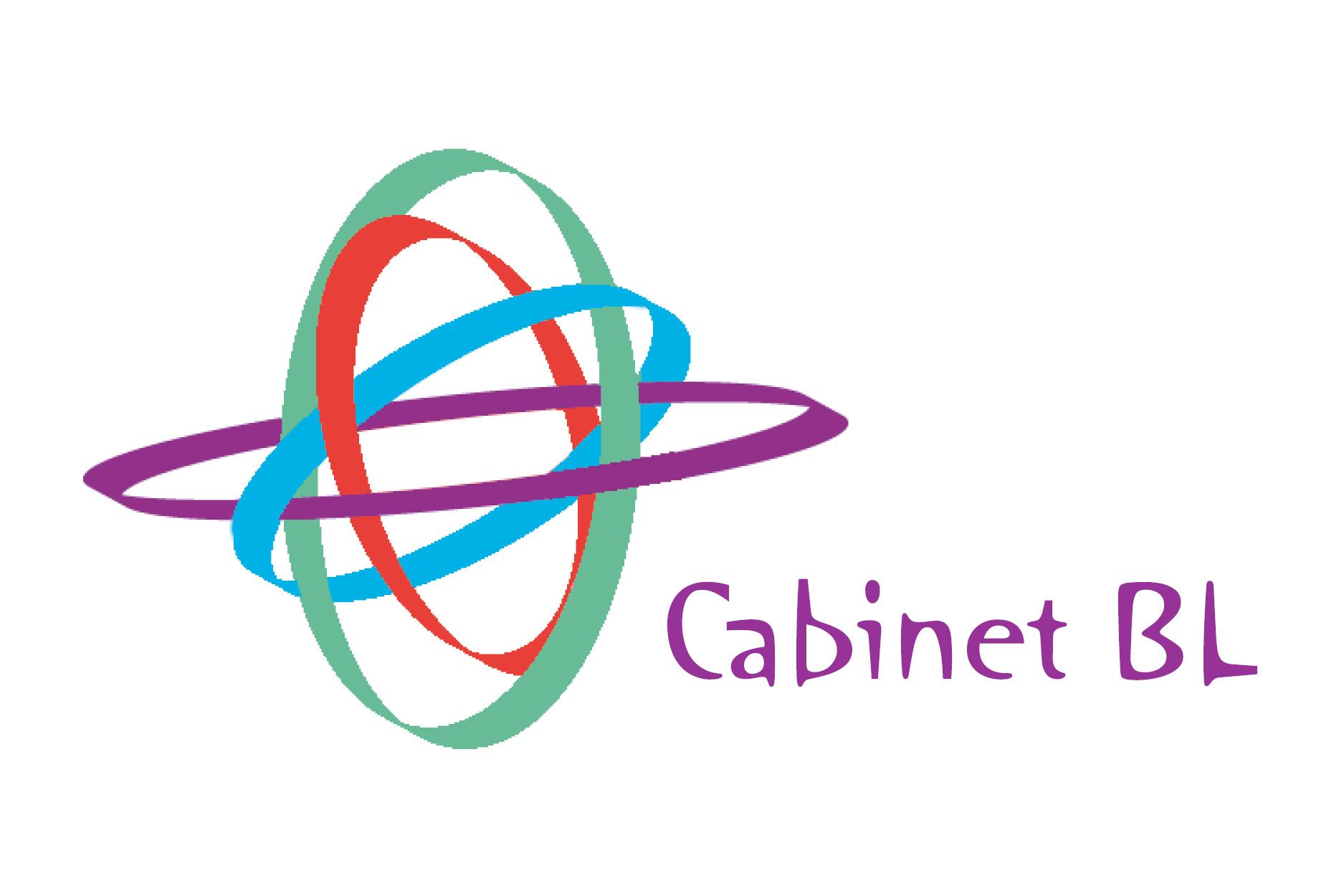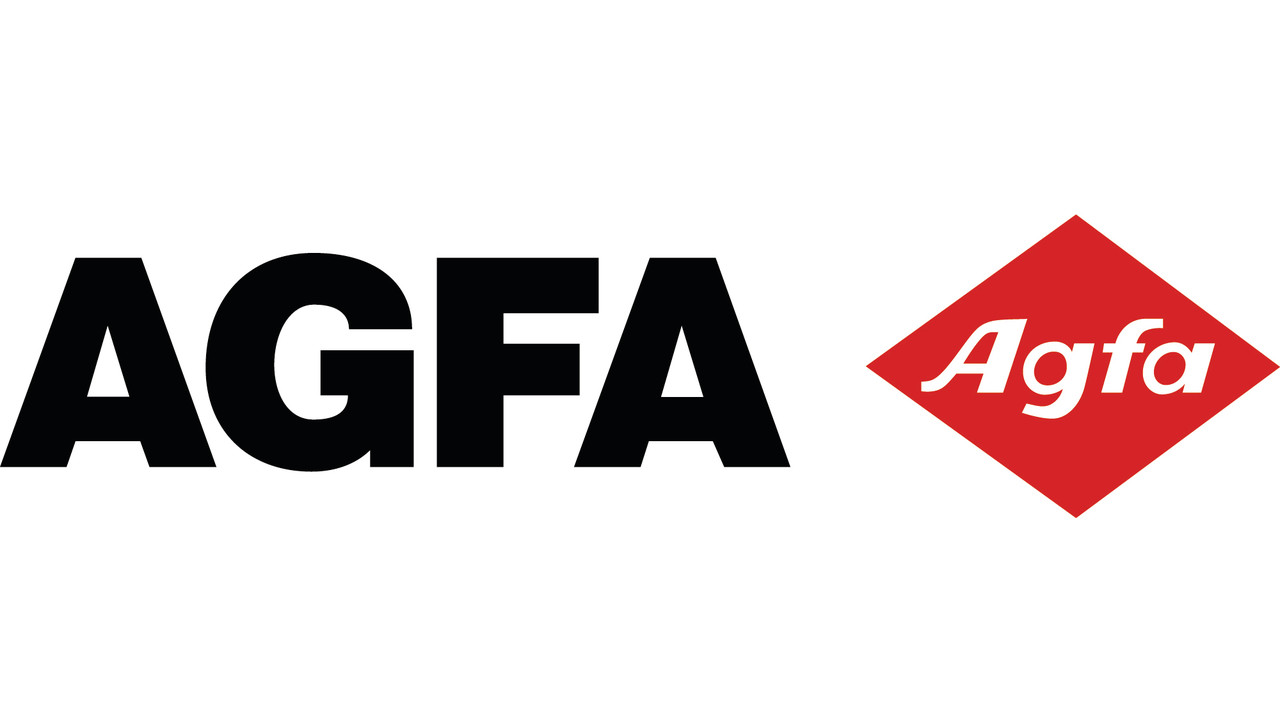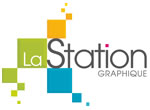Nearly one-in-five Americans now listen to audiobooks
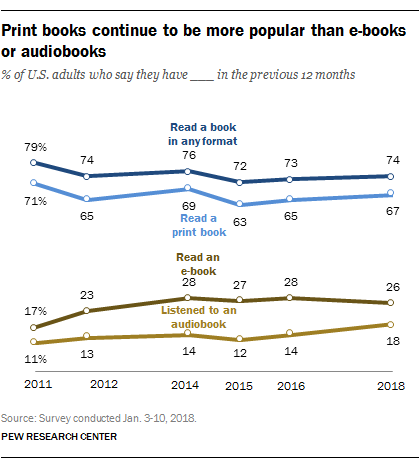
Americans are spreading their book consumption across several formats, and the use of audiobooks is rising.
About three-quarters (74%) of Americans have read a book in the past 12 months in any format, a figure that has remained largely unchanged since 2012, according to a Pew Research Center survey conducted in January. Print books remain the most popular format for reading, with 67% of Americans having read a print book in the past year.
And while shares of print and e-book readers are similar to those from a survey conducted in 2016, there has been a modest but statistically significant increase in the share of Americans who read audiobooks, from 14% to 18%.
Overall, Americans read an average (mean) of 12 books per year, while the typical (median) American has read four books in the past 12 months. Each of these figures is largely unchanged since 2011, when the Center first began conducting the surveys of Americans’ book reading habits.
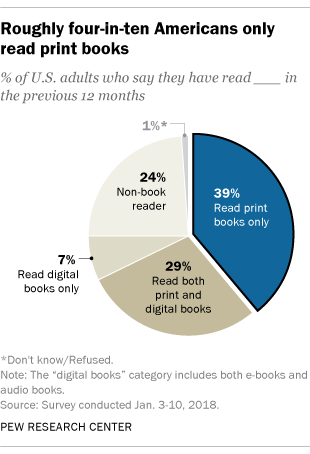
Despite some growth in certain digital formats, it remains the case that relatively few Americans consume digital books (which include audiobooks and e-books) to the exclusion of print. Some 39% of Americans say they read only print books, while 29% read in these digital formats and also read print books. Just 7% of Americans say they only read books in digital formats and have not read any print books in the past 12 months. Some demographic groups are more likely than others to be digital-only book readers, but in general this behavior is relatively rare across a wide range of demographics. For example, 10% of 18- to 29-year-olds only read books in digital formats, compared with 5% of those ages 50-64 and 4% of those 65 and older.
Interestingly, there are no significant differences on this question related to educational attainment or annual household income. Some 7% of college graduates are digital-only book readers, compared with 5% among those who have not graduated from high school.
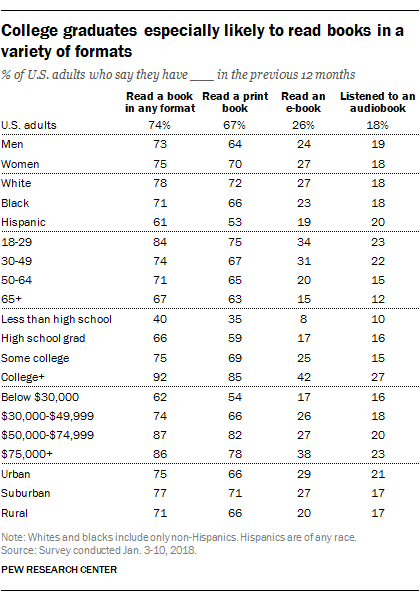
Demographic differences in book reading in 2018 are similar to the patterns seen in previous Pew Research Center surveys. For instance, college graduates are more likely to be book readers than those who have not attended college, and younger adults are more likely to read books than those 65 and older. At the same time, some groups have become more likely to read books in certain formats than was true in 2016. Some examples include:
Younger adults – Nearly one-quarter (23%) of 18- to 29-year-olds have listened to an audiobook in the past 12 months, compared with 16% who had done so in 2016.
College graduates – The share of college graduates who have read a print book or listened to an audiobook in the past 12 months has increased by 6 and 7 percentage points, respectively, since 2016. Notably, the share of high school graduates who have listened to an audiobook in the past 12 months has nearly doubled over that same time frame, from 9% in 2016 to 16% today.
Rural adults – Adults living in various community types are equally likely to listen to audiobooks. But 17% of those living in rural areas have listened to an audiobook in the past 12 months, up from 10% in 2016.
Télécharger : les chiffres détaillés (3 pages)
























